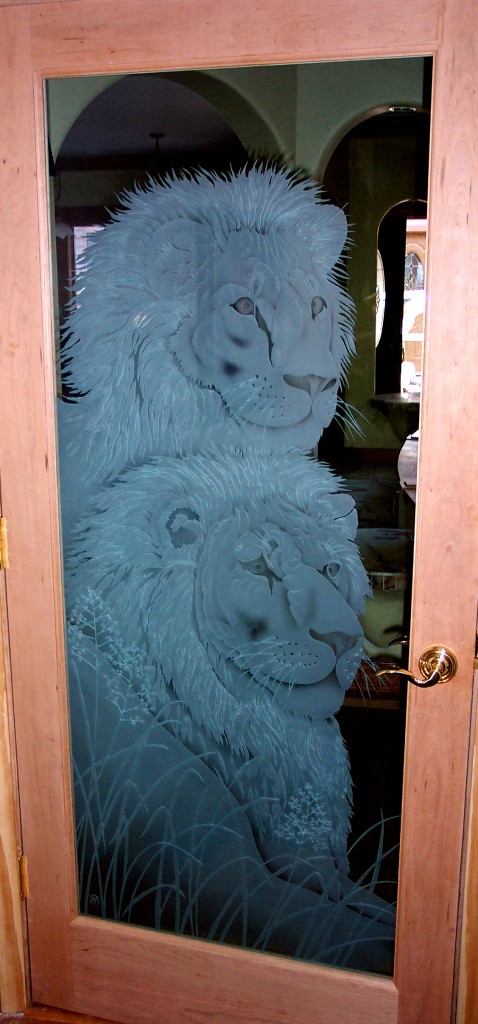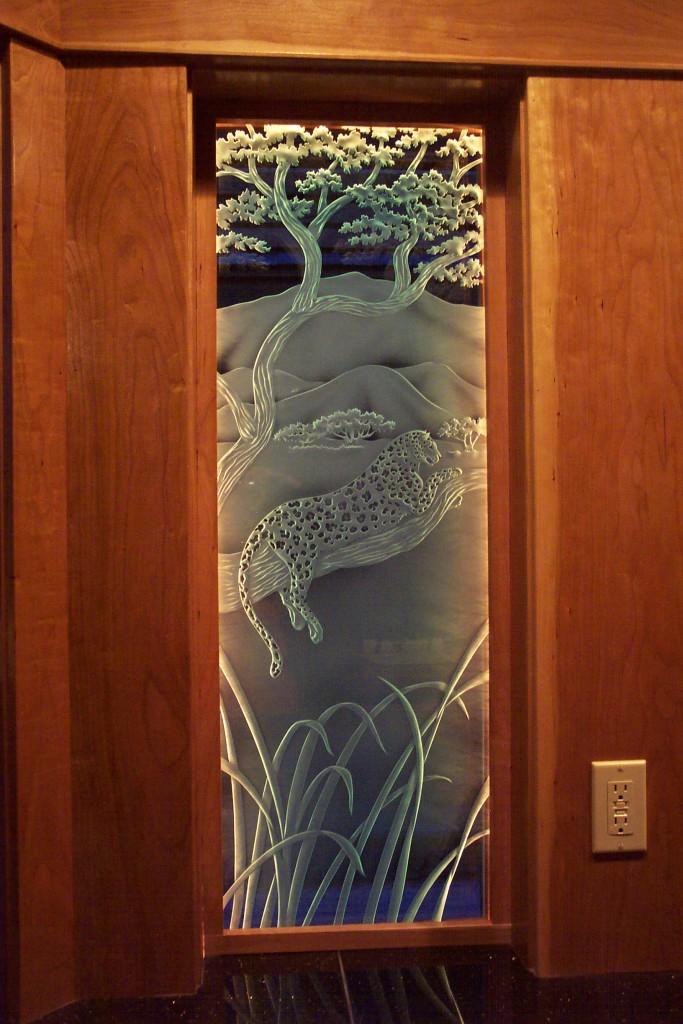
A sculptured, deeply sandblasted technique of etching, carving glass adds a large degree of texture, dimension and detail to a design. Like surface etching, the basic method involves creating a design to scale, transferring it on to glass that has been masked with a rubber resist, hand cutting the
details on the resist and removing areas of it to be sandblasted. Where the technique departs from a standard type of etching, is in the depth of sandblasting. Carving the glass in stages allows for a stronger definition of foreground in the picture, as well as all other details that would or could be three dimensional in real life. 
The technique requires us to sandblast on annealed or “plate” glass (including laminated glass), vs. tempered glass. Glass is typically 3/8″ or 1/2″ thick to carve safely into the surface. Thoughsomewhat risky, the annealed glass that’s been carved can be tempered for applications where safety glass is required. Carving glass is a time consuming affair, and requires a good amount of proficiency with the sandblasting equipment. Working with much higher air pressures, the process is more labor intensive than surface etching as the glass surface is literally sculpted away.
